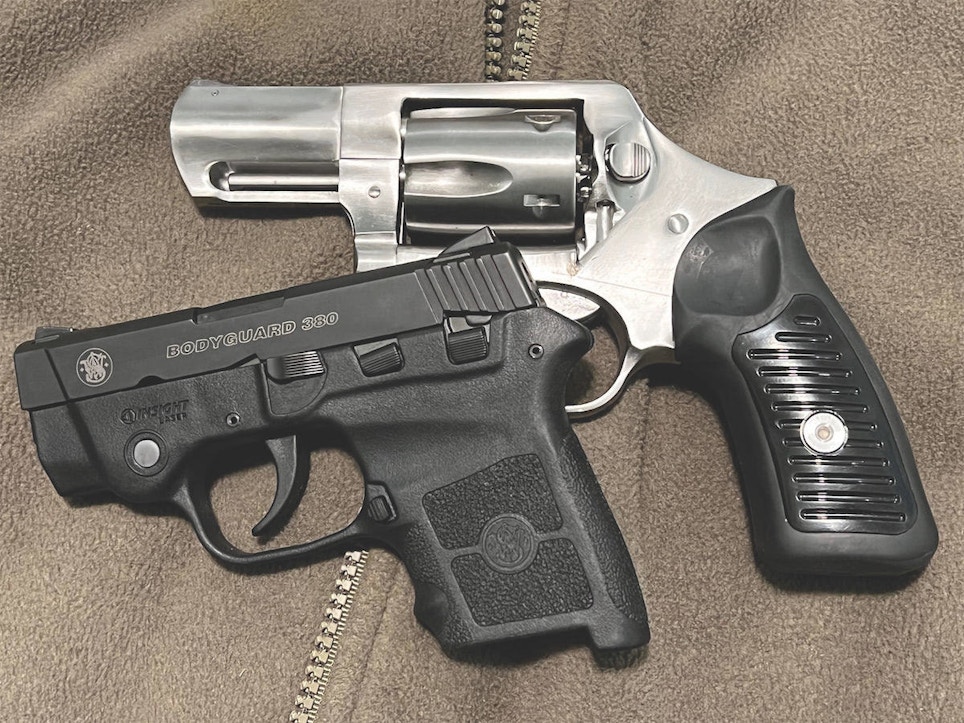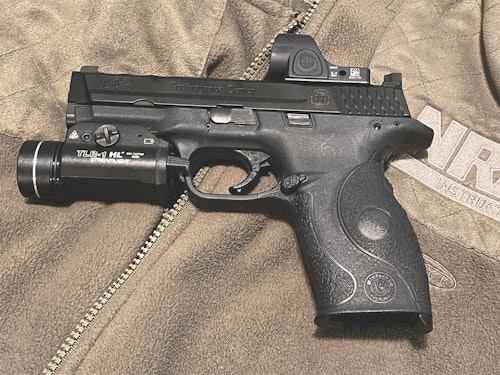The radical increase in gun sales hasn’t been driven by new hunters. It’s been driven by people who fear the current political climate and what appears to be an increase in violence across the nation.
These customers are coming in looking for a gun to protect themselves and their family members, yet many are operating with little or no knowledge of armed self-defense. They are asking for help, so it’s important to help them consider what makes a good self-defense pistol and why. Here’s what to tell them.
Reliability
The foremost concern in choosing a self-defense gun is reliability. A single malfunction on the firing range is no big deal. You run through the clearing drill: tap, rack, and you’re back to the bang. But should the same thing happen in a self-defense situation, it’s a life-or-death matter.
Your customers aren’t going to know this — or they are not going to understand the full significance of it because it’s highly unlikely that they’ve had to complete a complex motor skill while under extreme duress. As a police firearms instructor, I learned this through complex drills designed to put officers under stress and teach them to function. The results were not pretty. Even seasoned officers fumbled and forgot the steps or at least paused momentarily to recall them before acting. Any time that your gun isn’t firing and the bad guy’s is, you’re chances of survival diminish exponentially with time. It’s critical that you have a gun that fires every time you need it to.
There are some things that play into that. The most common cause of malfunctions in semi-auto pistols is bad ammunition. The second most common cause is a bad magazine. These are two things that should never be risked. Don’t use reloads. Factory ammunition (any factory ammunition) is far less likely to cause problems than are home reloads, so save those for practice time.
It’s also recommended that you only use factory magazines. I know how expensive they are and how tempting it can be to buy the off-brand. They might be as good as the factory ones, but is it worth risking your life over? Price the economy magazine then look at the difference between that and a factory magazine. Is it $10 or even $20 difference? There’s no reason to take the chance for such a minimal difference in cost. I’ve gone the cheap route on guns, magazines and ammunition. I learned the hard (expensive) way that it’s better to spend the extra money and ensure you’re getting quality.
Speaking of magazines, it’s recommended that you have at least three factory magazines loaded and ready. It’s rare for a single shot to stop a bad guy, and consider that many shooting situations involve multiple subjects. It’s better to have them and not need them than to need them and not have them.
Fitment
The ability to hold the gun properly and fire it is a second major factor. Guns that are too big, too heavy, too small, or just have the wrong grips on them put the defensive shooter at a severe disadvantage. You’ve got to have a gun that fits your hand so that you can control it properly.
Pick a gun that you can comfortably hold and reach the controls without struggling. If you must shift the gun around to operate it, you have the wrong one. Try out guns from many different manufacturers. Test fire them if possible before purchasing, but make sure that your gun fits your hand. Just as important as size is weight. Get one that you can comfortably hold up for an extended period of time if needed, even if you have to step down in caliber to do so.
Caliber
Any caliber can be successfully used for self-defense, but that doesn’t mean they are all equal. There are a lot of great calibers to choose from. The minimum that is usually recommended is a .380 auto, yet most instructors recommend a 9mm, which is probably the ideal caliber for self-defense, or larger. Ammunition is generally plentiful and comes in a wide variety of designs from ball ammunition for practice to exotic bullets designed for maximum damage. It’s cheap when compared to most other calibers. There are also a wide variety of guns to choose from. These range from small five-shot revolvers to full-size semi-autos with 17-round magazines.
When speaking of caliber, there are two main factors that must be balanced: stopping power vs. recoil management. The 9mm provides a relatively mild recoil that is easy to control while also providing ample terminal ballistics to eliminate a threat. Smaller calibers have less recoil but also less stopping power. Larger calibers have greater stopping power at the expense of more recoil. Balance is the key.
Action Type
When considering a gun for defensive purposes, the simpler the design and operation, the better off you are. There’s a reason why Glocks replaced Smith and Wesson models in the ’80s — they were less complicated and less apt to fail.
The simplicity of revolvers is a major factor for them being recommended. Double-Action revolvers offer the ability for the shooter to just pick them up, aim, and shoot without excess manipulations. But they are not the only option. There has been an explosion in striker-fired pistols in the last two decades. Many of these are just as reliable and as easy to operate as revolvers. That’s their beauty, they are simple, reliable and accurate.
This may seem extreme, but I’ve seen the evidence in the form of dead police officers who had trouble deactivating their safeties and have paid for it with their lives. I’ve seen police officers struggle to remove their gun from security holsters. The point is that the simpler things are, the less likelihood there is of things going wrong. You may think that the additional thumb safety is needed on that M&P, but all modern firearms have passive safeties that ensure they aren’t going to accidentally fire. You might want to consider passing on it.
Sighting Devices
Most modern pistols have good sights from the factory. Make sure they are easy for you to use. My aging eyes prefer large dot sights in front or sights with high contrast coloring to make them easy to pick up in any lighting conditions. Optics are another option. They are easier to use than standard sights, although they take some time to get used to. There are also many different laser sight options available. I’ve used them for years and find them to be a great help in certain situations. The major advantage of the laser sights and the pistol-mounted optics is that they give you the ability to focus solely on the threat. There’s no need to line up front and rear sights which can only be done by taking your focus from the threat.
Final Considerations
All of the above suggestions are my personal opinion, but they are based on years of training both civilians and police officers, as well as my own firearms use. Note that all of the above items focus on equipment. That’s because your job as a salesman is to recommend and sell the right equipment for the job.
But there are two other things that should also be emphasized to the gun buyer. The first is practice. They need to purchase enough ammunition to become proficient with their gun. Its use must become almost second nature to them. They will also benefit from professional instruction. It’s possible to learn and practice on your own, but it’s much more efficient to let a trained professional help you master the needed skills quickly and efficiently.
The second thing to recommend is books about the nature of armed conflict and how the body responds to it. Without this information, they might be overwhelmed by their own bodily responses. There are lots of books available. I’d recommend starting with the works by Col. Dave Grossman and/or Loren W. Christensen. Both are leaders in the field and their books are highly informative. Combat survival is as much a mental activity as it is a physical one.
Remember, you are the expert in the eyes of your customer. They are counting on you for sound advice based on knowledge and experience. It doesn’t mean that you have to be an expert on everything, but you should be prepared to help with these common questions and scenarios.







